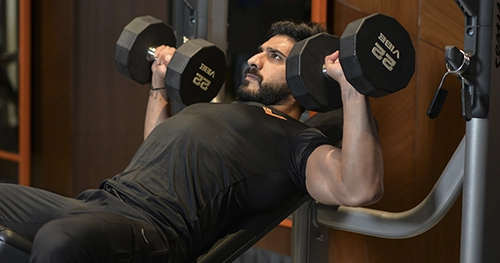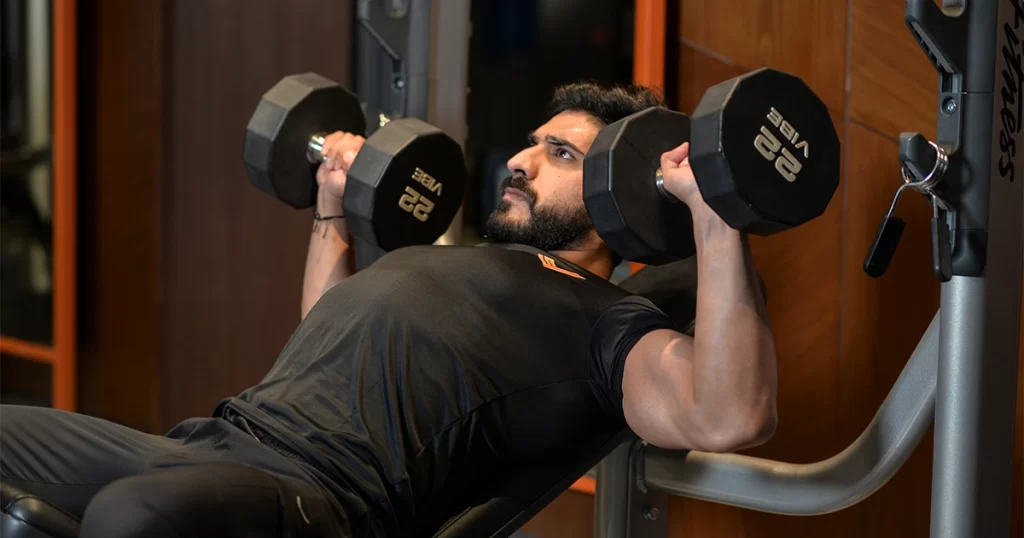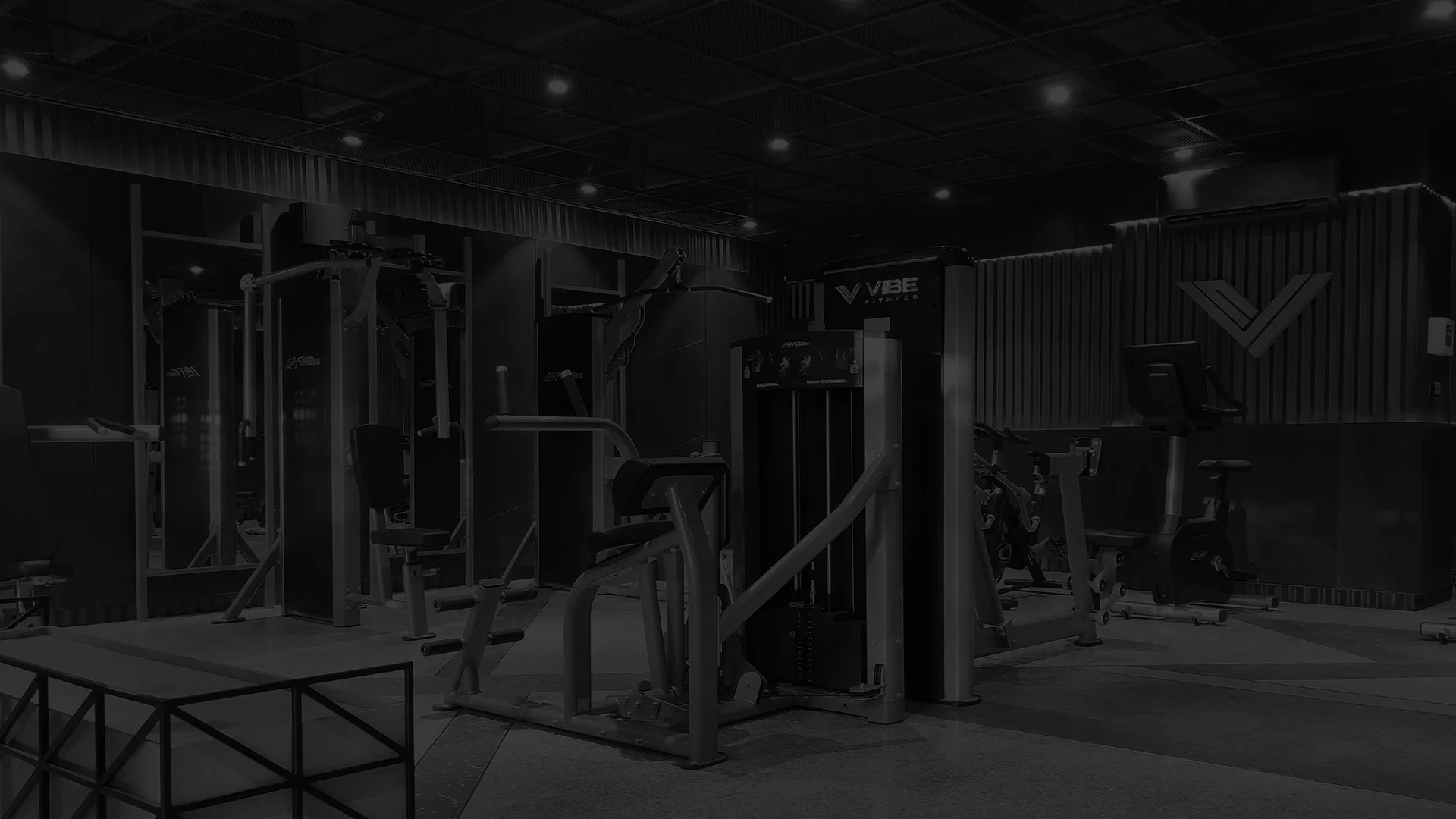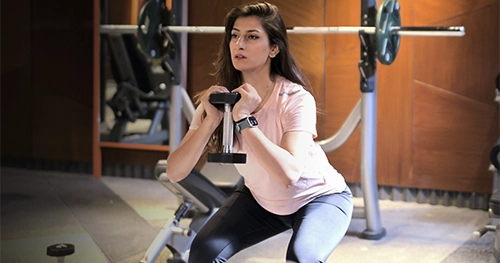
Achieve Optimal Health: Balancing Cardio and Strength Training | Strength Training Tips
Achieving optimal fitness requires striking the perfect balance between cardio and strength training. To help you reach your fitness objectives, this all-inclusive guide will delve into integrating both types of workouts seamlessly in your routine with maximum efficiency.

Comprehending the Concepts of Strength Training and Cardio Training:
1. Strength Training Essentials:
Strength training forms the foundation of any well-rounded fitness regimen. It involves exercises that target specific muscle groups, using resistance to build strength, endurance, and muscle mass. Here’s a detailed look at the essentials of strength training:
- Types of Exercises: Strength training exercises can be categorised into compound and isolation exercises. Compound exercises engage multiple muscle groups simultaneously, such as squats, deadlifts, and bench presses. Isolation exercises focus on a single muscle group, such as bicep curls or tricep extensions.
- Equipment: Strength training can be performed using various types of equipment, including free weights (dumbbells, barbells), resistance bands, weight machines, and even bodyweight exercises. Each type of equipment offers unique advantages and challenges, allowing individuals to tailor their workouts to their preferences and fitness goals.
- Benefits: Strength training offers numerous benefits beyond simply building muscle mass. It helps to increase bone density, improve joint health and stability, enhance overall functional strength, and boost metabolism. Additionally, strength training plays a crucial role in injury prevention and rehabilitation, making it beneficial for individuals of all ages and fitness levels.
2. Cardio Training Basics:
Cardiovascular training, often referred to as cardio, focuses on improving the health and efficiency of the heart and lungs. It involves activities that elevate the heart rate and increase oxygen consumption over an extended period. Here’s an in-depth look at the basics of cardio training:
- Forms of Cardio Exercises: Cardio exercises encompass a wide range of activities, including running, cycling, swimming, brisk walking, hiking, dancing, and rowing, among others. The key is to engage in activities that elevate the heart rate and sustain it for a prolonged duration.
- Importance for Cardiovascular Health: Cardio training is essential for maintaining cardiovascular health and reducing the risk of heart disease, stroke, and other chronic conditions. It strengthens the heart muscle, improves blood circulation, lowers blood pressure, and enhances overall aerobic capacity.
- Variety and Adaptation: One of the advantages of cardio training is its versatility. There are numerous ways to incorporate cardiovascular exercise into your routine, allowing for variety and adaptation based on individual preferences, fitness levels, and goals. Whether it’s high-intensity interval training (HIIT), steady-state cardio, or outdoor activities, the options are virtually limitless.
Benefits of Balancing Strength and Cardio:

1. Enhanced Overall Fitness:
Combining strength and cardio training in your workout routine offers a multitude of benefits for overall fitness:
- Endurance: Cardiovascular exercises such as running, cycling, or swimming improve cardiovascular endurance by strengthening the heart and lungs. This allows you to sustain physical activity for longer periods without fatigue.
- Strength: Strength training exercises target specific muscle groups, increasing muscular strength and power. By incorporating compound movements like squats, deadlifts, and push-ups, you engage multiple muscle groups simultaneously, leading to comprehensive strength gains.
- Flexibility: While strength training primarily focuses on building muscle mass and strength, it also promotes flexibility when performed through a full range of motion. Additionally, incorporating dynamic stretches and mobility exercises into your routine can further enhance flexibility and joint mobility.
- Overall Fitness Levels: Balancing strength and cardio training enhances overall fitness levels by improving various components of physical fitness, including cardiovascular health, muscular strength, endurance, flexibility, and agility. This comprehensive approach to training ensures that you’re not only strong but also capable of performing daily activities with ease and efficiency.
2. Weight Management:
Integrating both strength and cardio training into your workout regimen can significantly aid in weight loss and weight management:
- Calorie Burning: Cardiovascular exercises are effective for burning calories and increasing energy expenditure during and after workouts. High-intensity cardio sessions, such as HIIT, can elevate your metabolism and continue burning calories even after you’ve finished exercising. On the other hand, strength training boosts metabolism by building lean muscle mass, which increases resting metabolic rate and facilitates fat loss over time.
- Building Lean Muscle Mass: Strength training is crucial for building lean muscle mass, which plays a key role in weight management. Muscle tissue is metabolically active, meaning it burns more calories at rest compared to fat tissue. By incorporating strength training into your routine, you not only burn calories during the workout but also increase your body’s capacity to burn calories throughout the day.
- Body Composition: Balancing strength and cardio training helps improve body composition by reducing body fat percentage and increasing muscle mass. This not only contributes to a leaner and more toned physique but also enhances overall health and metabolic function.
Tips for Effective Gym Training:
Proper Form and Technique:

Maintaining proper form and technique during strength training exercises is crucial for both injury prevention and maximising results. Here’s why it’s so important:
- Injury Prevention: Performing exercises with improper form can lead to muscle imbalances, strains, sprains, and other injuries. For example, squatting with poor form may stress the knees and lower back, increasing the risk of injury. By focusing on proper form, you distribute the workload evenly across muscles and joints, reducing the likelihood of overuse injuries.
- Muscle Engagement: Proper form ensures that you’re effectively targeting the intended muscle groups with each exercise. For instance, during a bicep curl, maintaining proper wrist alignment and elbow position ensures optimal engagement of the biceps muscles, maximising the effectiveness of the exercise.
- Long-Term Progress: Consistently using correct form allows you to lift heavier weights and perform more challenging exercises over time. This progressive overload stimulates muscle growth and strength gains while minimising the risk of setbacks due to injury.
To maintain proper form during strength training:
– Focus on alignment: Align your body correctly for each exercise, keeping your spine neutral and joints in line.
– Use controlled movements: Avoid jerking or swinging motions, and instead perform exercises with slow and controlled movements.
– Start with lighter weights: Begin with lighter weights to master proper form before gradually increasing resistance.
– Seek guidance: If you’re unsure about proper form, consider working with a certified personal trainer who can provide instruction and feedback.
2. Progressive Overload:

Progressive overload is the gradual increase in the intensity, volume, or difficulty of your workouts over time to continually challenge your muscles and stimulate growth. Here’s why it’s essential for long-term progress:
Muscle Adaptation: The human body adapts to stress by becoming stronger and more resilient. By progressively overloading your muscles with heavier weights, more repetitions, or more challenging exercises, you force them to adapt and grow stronger over time.
Preventing Plateaus: Without progressive overload, your muscles can plateau, meaning they stop responding to your workouts and fail to make further gains. By continuously increasing the demands placed on your muscles, you keep them in a state of growth and adaptation.
Incorporating Variety: Progressive overload doesn’t just mean lifting heavier weights. It also involves varying your workouts by changing exercises, rep ranges, rest periods, and training techniques to keep your muscles guessing and prevent boredom.
To optimize rest and recovery:
- Schedule rest days: Plan regular rest days into your workout schedule to allow your body time to recover fully.
- Prioritise sleep: Aim for 7-9 hours of quality sleep per night to support muscle repair and recovery.
- Incorporate active recovery: Engage in low-intensity activities such as walking, yoga, or stretching on rest days to promote blood flow and alleviate muscle soreness.
- Listen to your body: Pay attention to signs of fatigue, soreness, or decreased performance, and adjust your training intensity or volume accordingly.
Are you primed to achieve your fitness goals by harmonising cardio and strength training? Enroll at Vibe Gym today for an exemplary journey towards optimal physical condition. Our cutting-edge amenities, proficient trainers, and broad array of gear assure that all needs are met in pursuit of desired results. Experience a well-rounded regimen with countless benefits for the body – empowered upon embarking on this next-level fitness quest solely offered through Vibe Gym! Do not procrastinate any longer; join us now to revolutionise health and wellness!
FAQs (Frequently Asked Questions)
1. Why is it important to balance cardio and strength training in my workout routine?
Balancing cardio and strength training optimises overall fitness, improves heart health, builds muscle mass, boosts metabolism, and supports weight management.
2. How often should I incorporate cardio and strength training into my workout schedule?
Aim for 2-3 days of each per week, alternating between cardio and strength training sessions to allow for adequate recovery and consistent progress.
3. What are some effective strategies for balancing cardio and strength training in my workout routine?
Strategies include alternating cardio and strength days, incorporating interval training, combining cardio and strength exercises in circuit workouts, and listening to your body for optimal rest and recovery.




